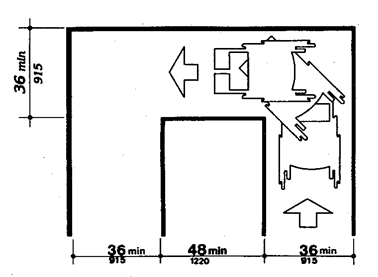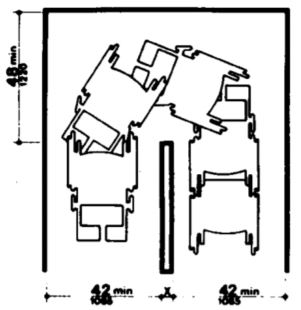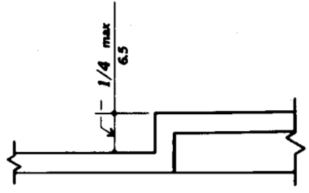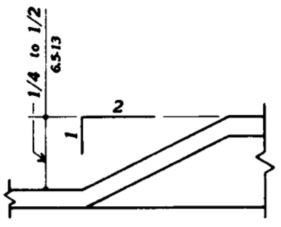4.3 ACCESSIBLE ROUTE.
4.3.1* GENERAL.
All walks, halls, corridors, aisles, and other spaces that are part of an accessible route shall comply with 4.3.
4.3.2 LOCATION.
(1) At least one accessible route within the boundary of the site shall be provided from public transportation stops, accessible parking, and accessible passenger loading zones, and public streets or sidewalks to the accessible building entrance they serve.
(2) At least one accessible route shall connect accessible buildings, facilities, elements, and spaces that are on the same site.
(3) At least one accessible route shall connect accessible building or facility entrances with all accessible spaces and elements and with all accessible dwelling units within the building or facility.
(4) An accessible route shall connect at least one accessible entrance of each accessible dwelling unit with those exterior and interior spaces and facilities that serve the accessible dwelling unit.
4.3.3 WIDTH.
The minimum clear width of an accessible route shall be 36 in (915 mm) except at doors (see 4.13.5). If a person in a wheelchair must make a turn around an obstruction, the minimum clear width of the accessible route shall be as shown in Fig. 7.
Figure 7
Width of Accessible Route
Figure 7(a) 90 Degree Turn
Note: Dimensions shown apply where x < 48 inches (1220 mm). Figure 7(b) Turn around an Obstruction
Figure 7(c) Changes in Level
Figure 7(d) Changes in Level
4.3.4 PASSING SPACE.
If an accessible route has less than 60 in (1525 mm) clear width, then passing spaces at least 60 in by 60 in (1525 mm by 1525 mm) shall be located at reasonable intervals not to exceed 200 ft (61 m). A T-intersection of two corridors or walks is an acceptable passing place.
4.3.5 HEAD ROOM.
Accessible routes shall comply with 4.4.2.
4.3.6 SURFACE TEXTURES.
The surface of an accessible route shall comply with 4.5.
4.3.7 SLOPE.
An accessible route with a running slope greater than 1:20 is a ramp and shall comply with 4.8. Nowhere shall the cross slope of an accessible route exceed 1:50.
4.3.8 CHANGES IN LEVELS.
Changes in levels along an accessible route shall comply with 4.5.2. If an accessible route has changes in level greater than 1/2 in (13 mm), then a curb ramp, ramp, elevator, or platform lift shall be provided that complies with 4.7, 4.8, 4.10, or 4.11, respectively. Stairs shall not be part of an accessible route.
4.3.9 DOORS.
Doors along an accessible route shall comply with 4.13.
4.3.10* EGRESS.
Accessible routes serving any accessible space or element shall also serve as a means of egress for emergencies or connect to an accessible place of refuge. Such accessible routes and places of refuge shall comply with the requirements of the administrative authority having jurisdiction. Where fire code provisions require more than one means of egress from any space or room, then more than one accessible means of egress shall also be provided for handicapped people. Arrange egress so as to be readily accessible from all accessible rooms and spaces.





User Comments/Questions
Add Comment/Question